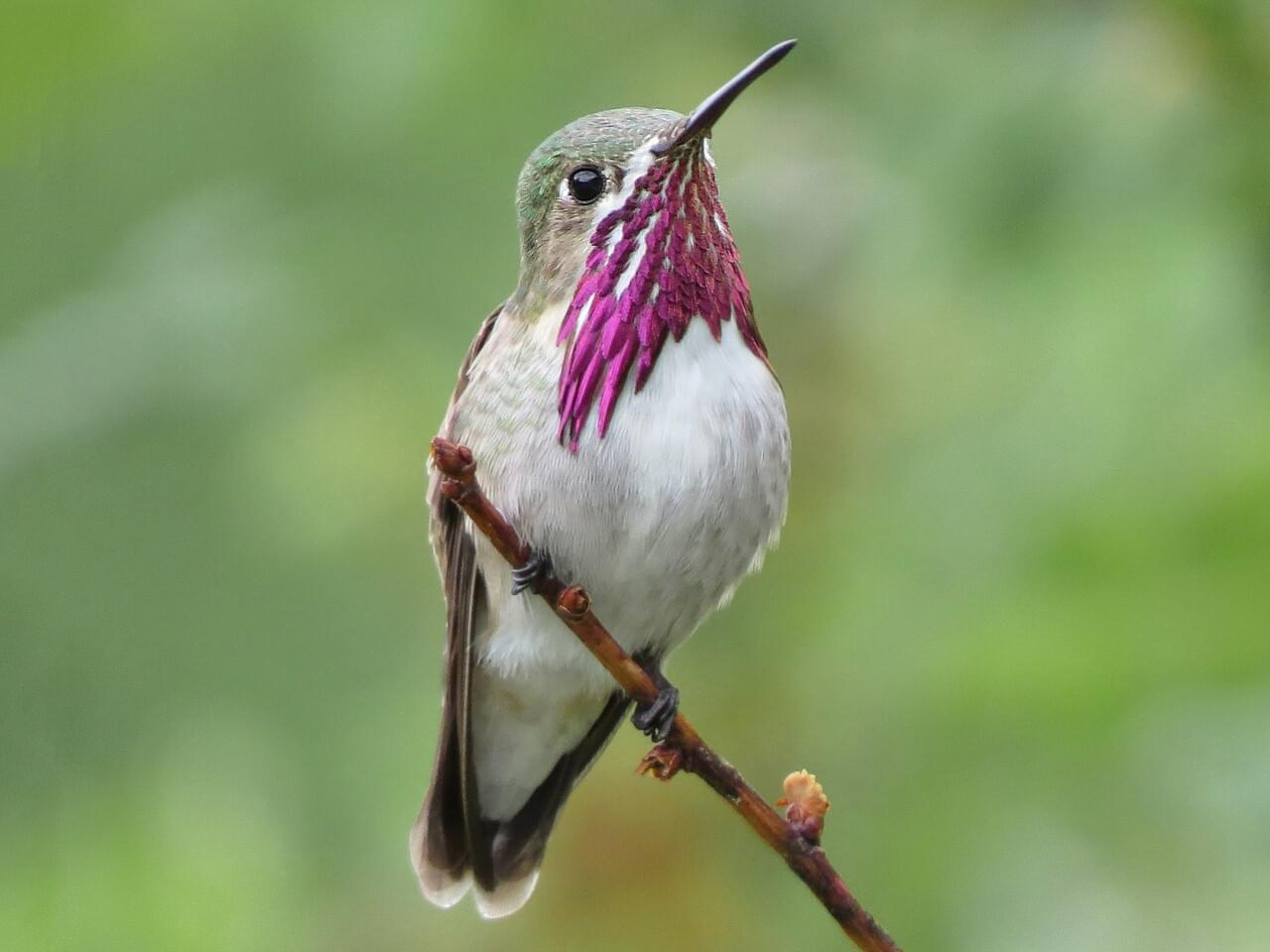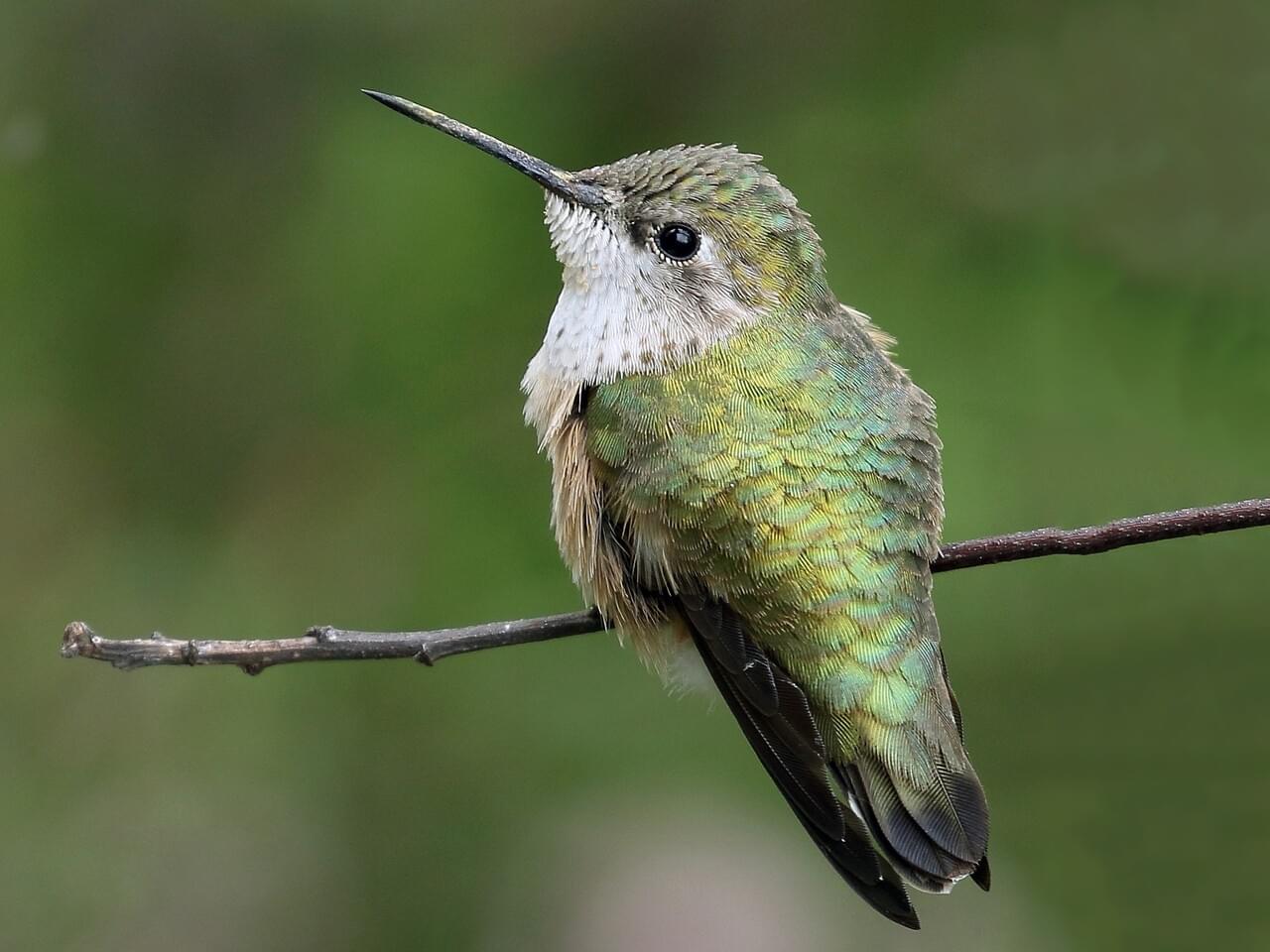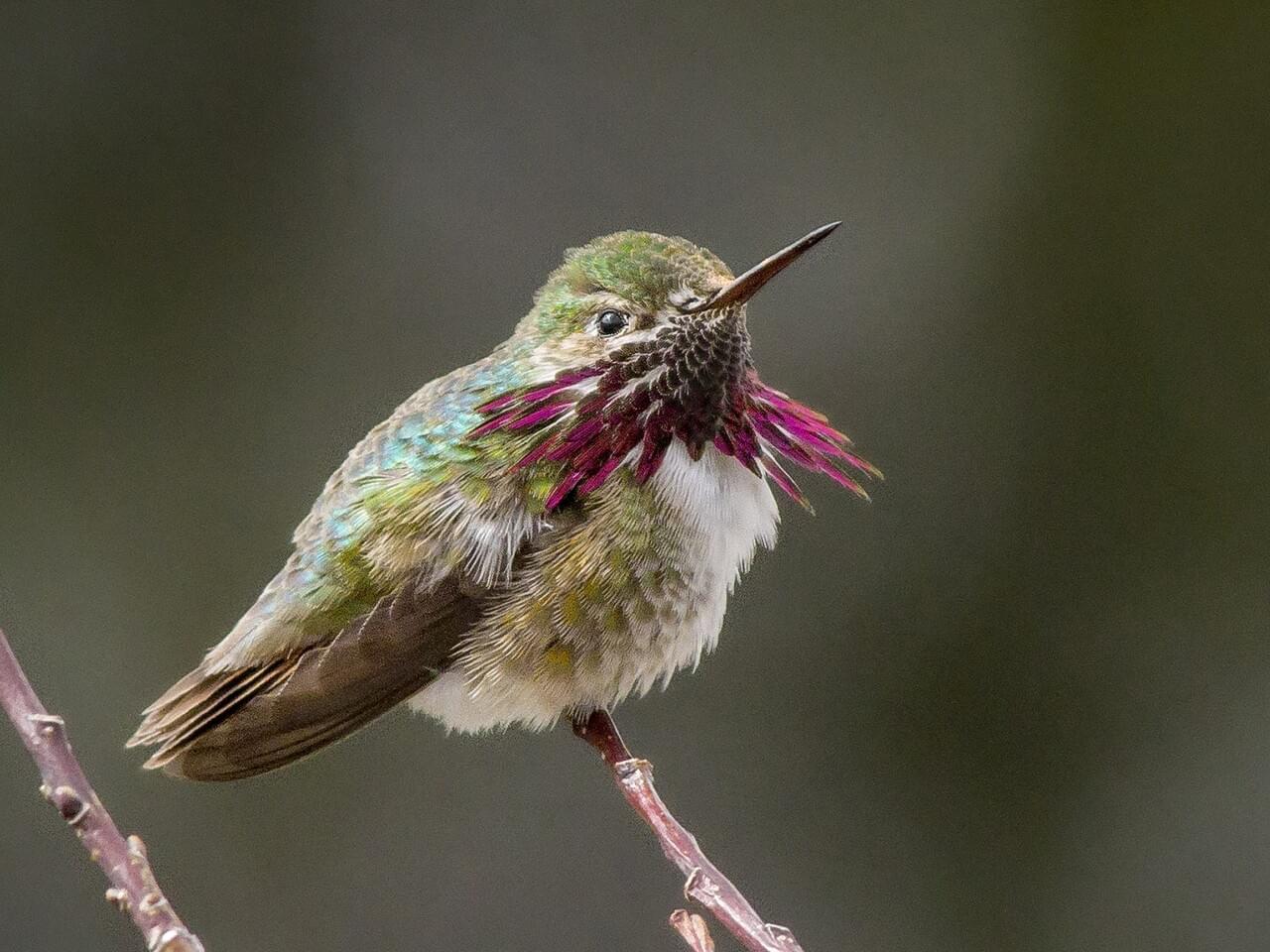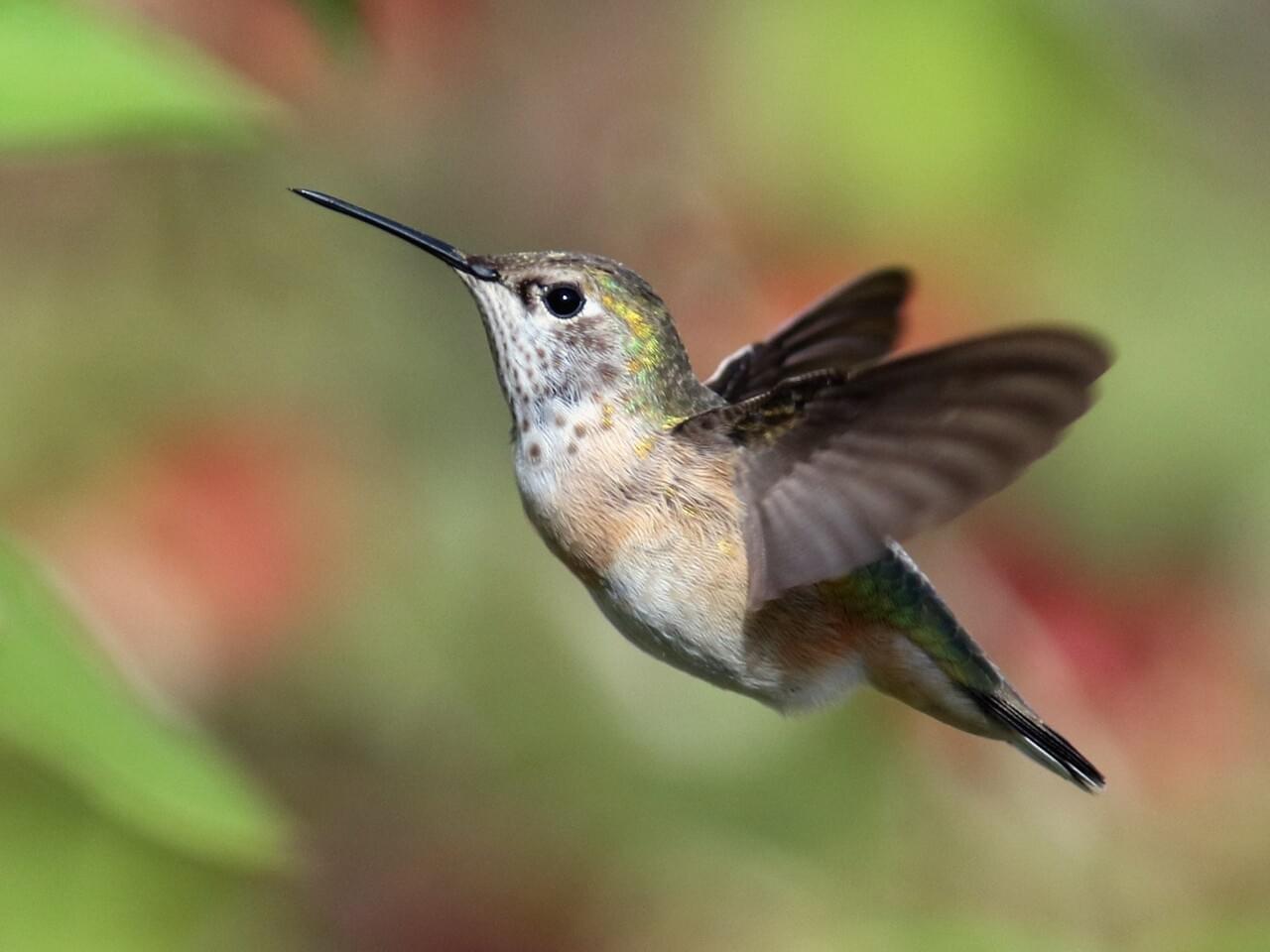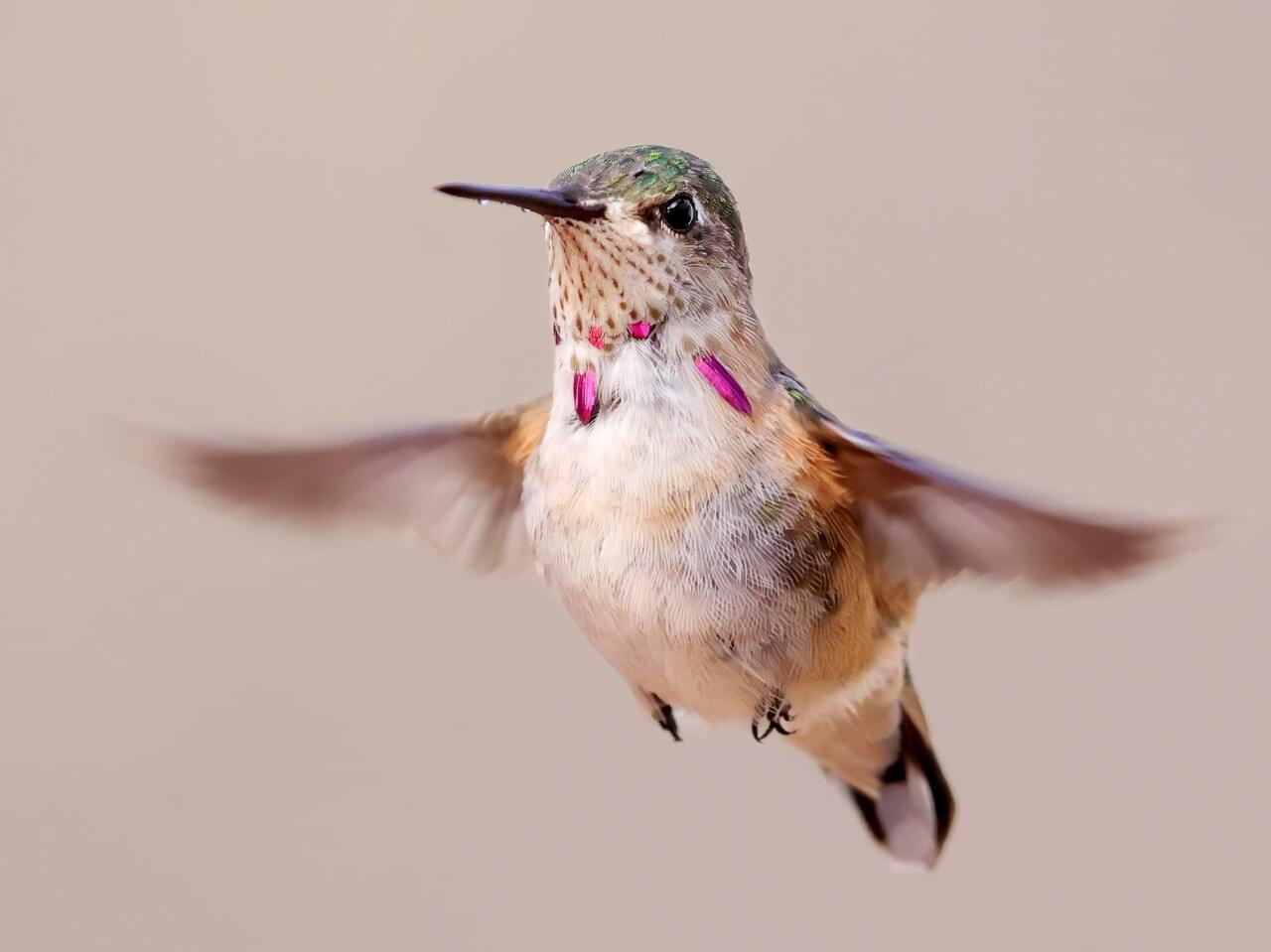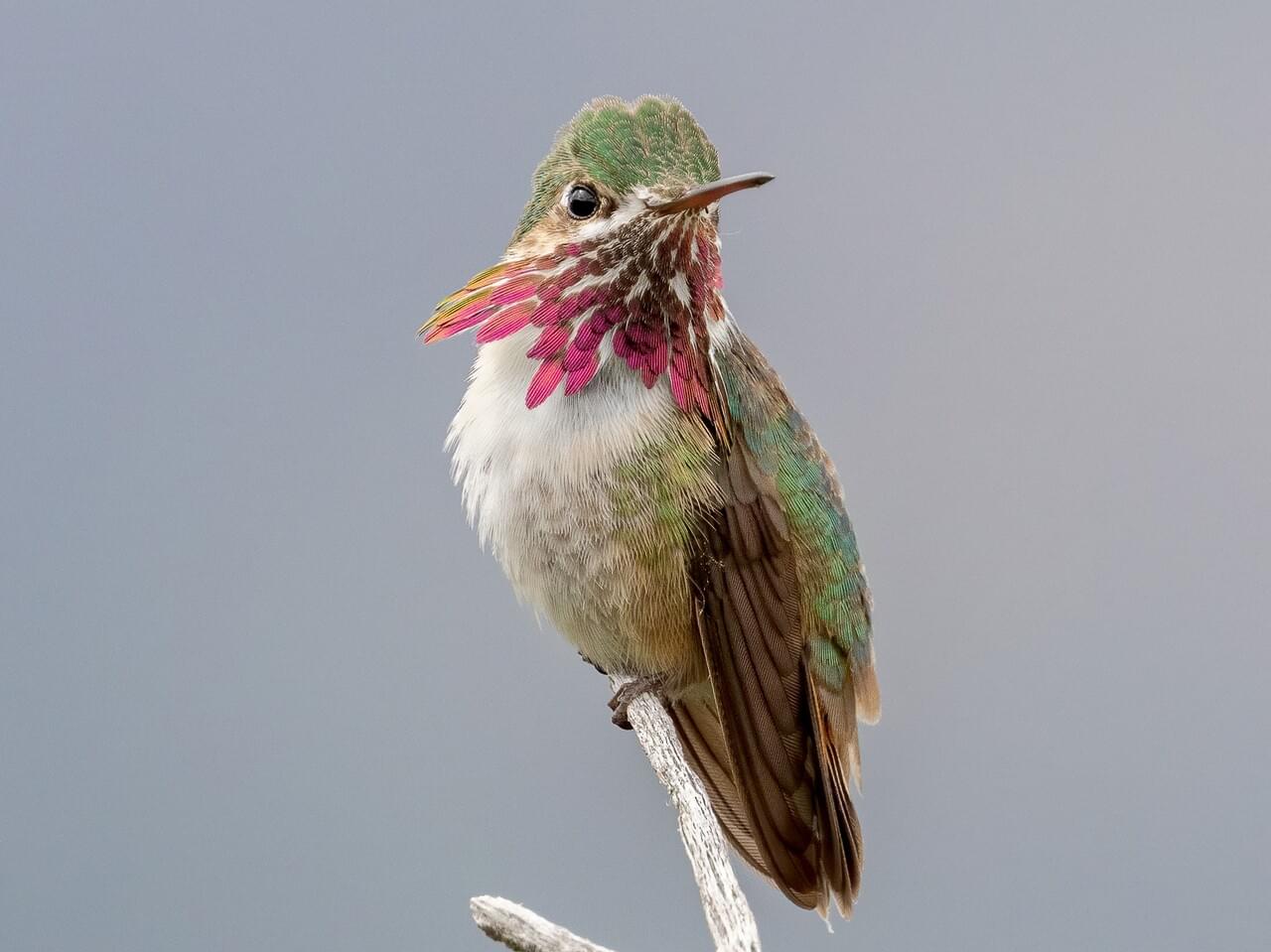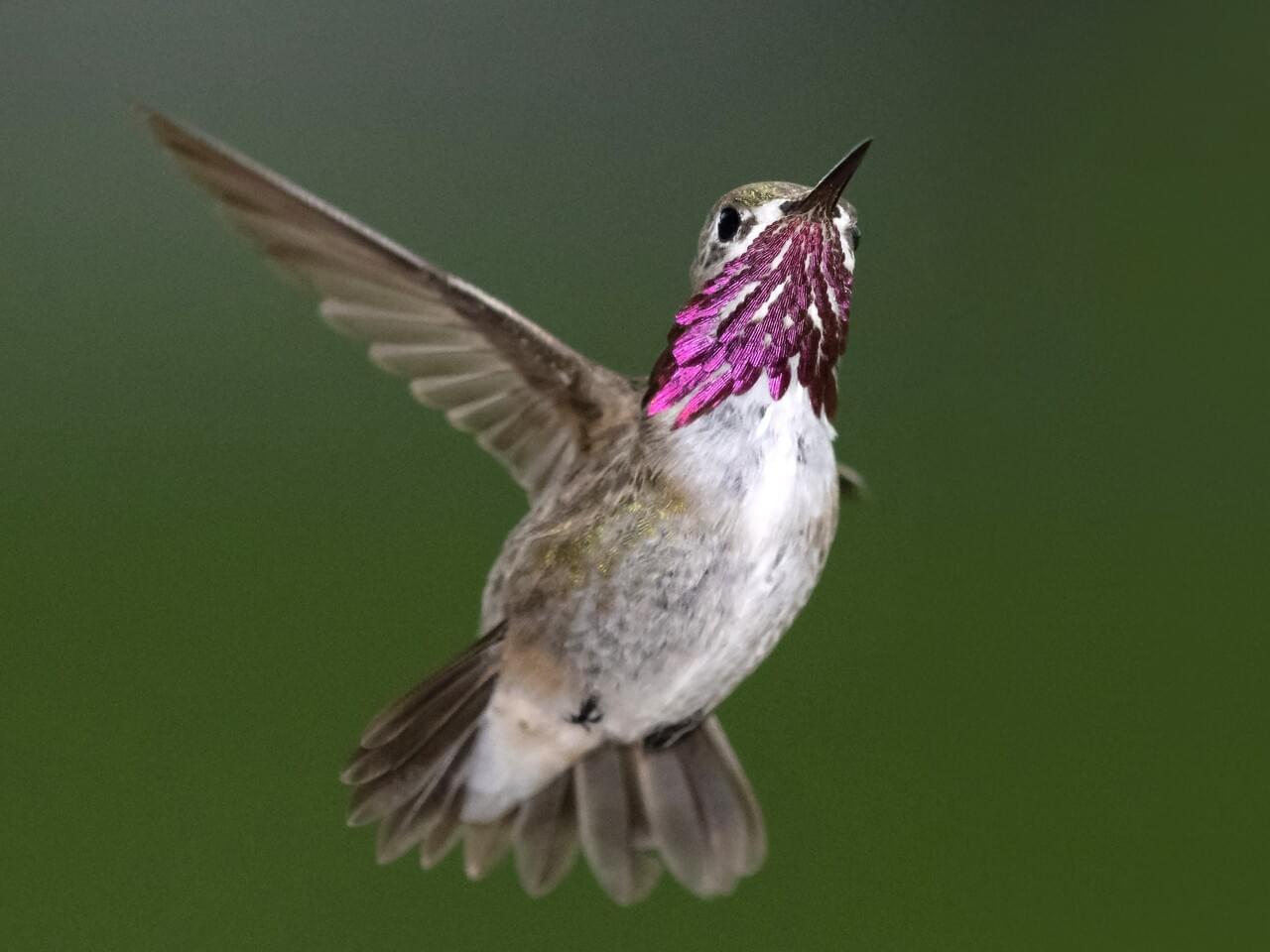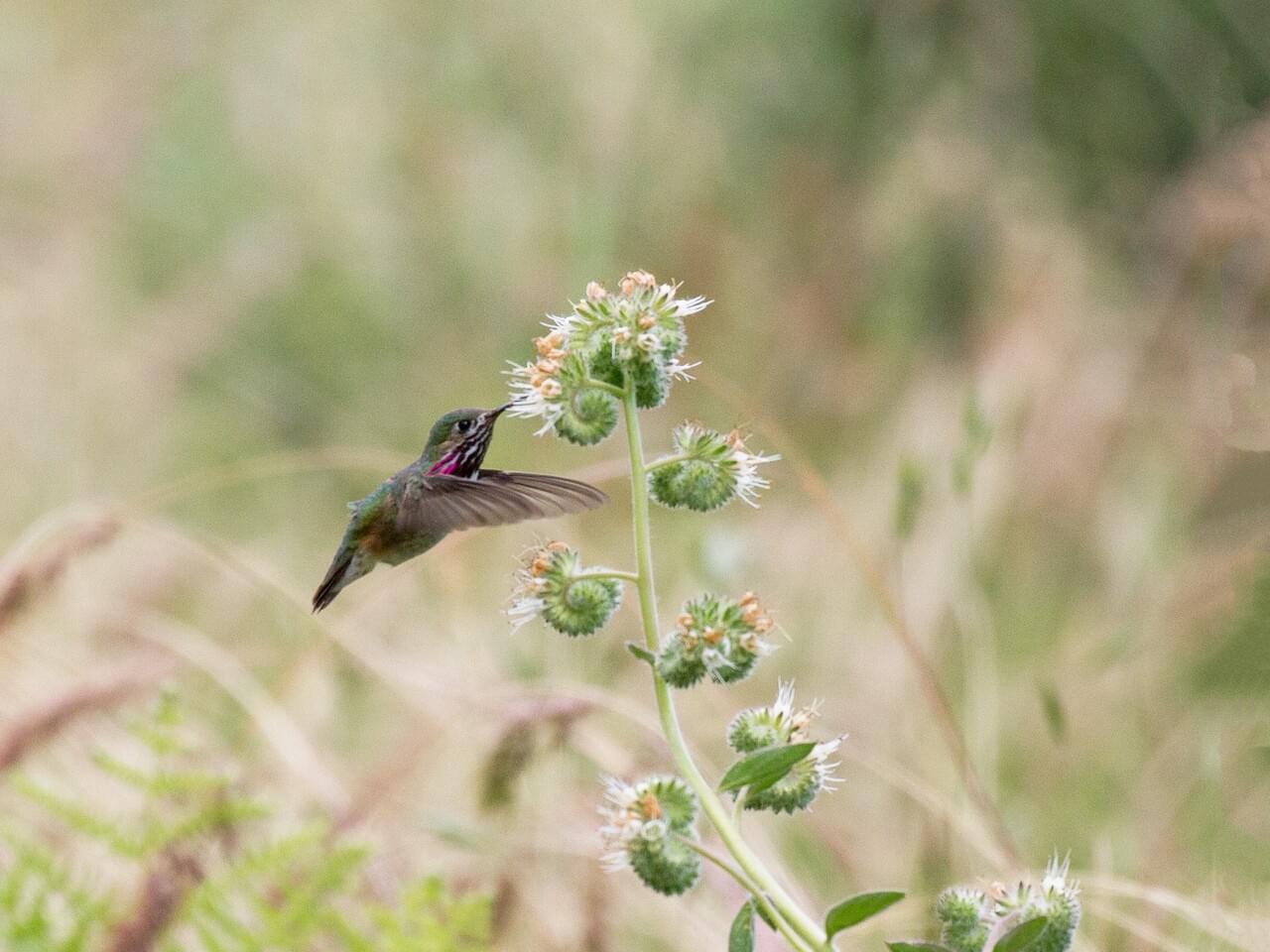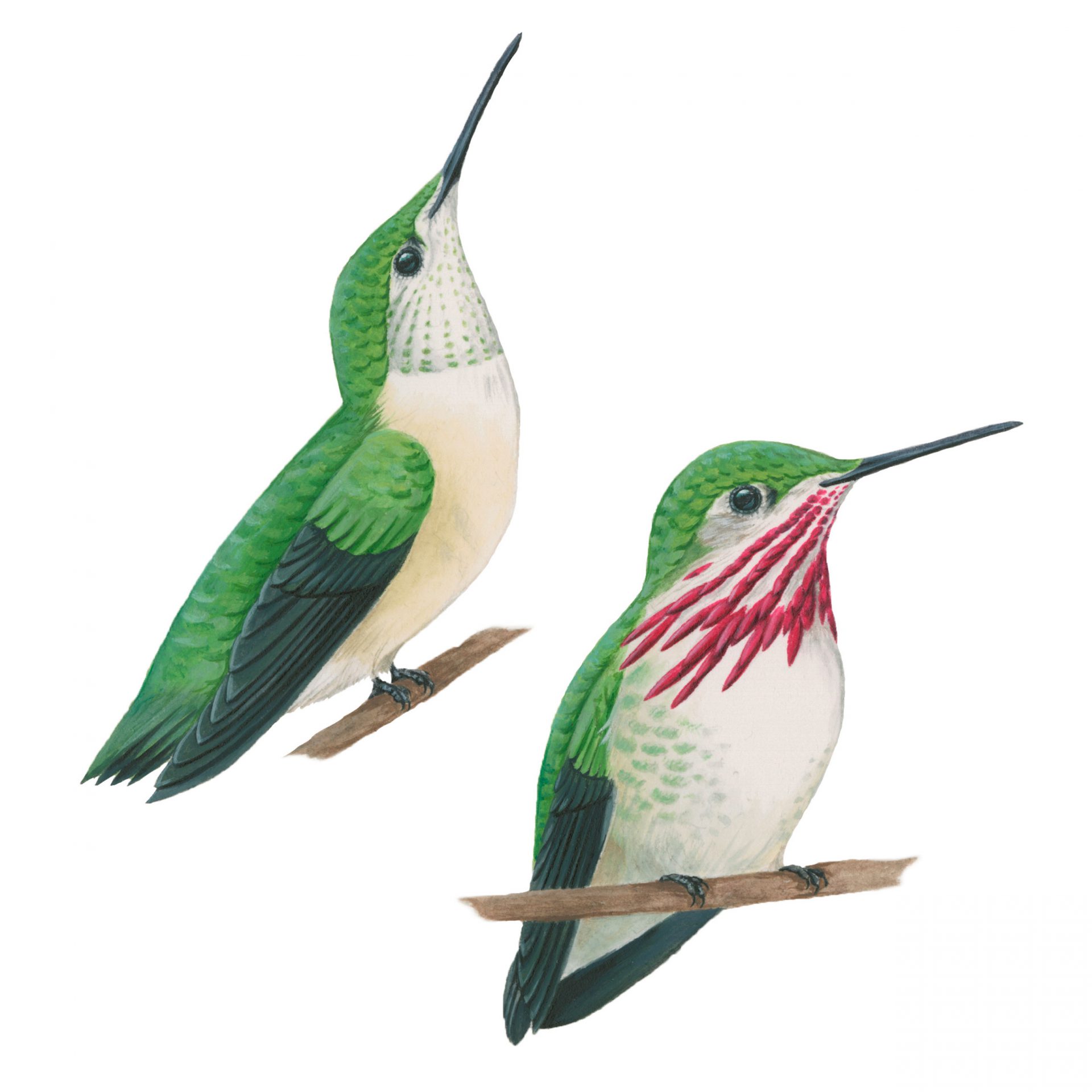 Photo ©
Liz Clayton Fuller
Photo ©
Liz Clayton Fuller
Calliope Hummingbird
Magenta rays burst from the throats of the male Calliope Hummingbird as it dances and hovers, performing U-shaped display dives for females. During these displays he makes a sputtering buzz with tail feathers and gives a sharp zinging call. This is the smallest bird in the United States, yet this tiny hummingbird breeds in meadows and open forests high in chilly Northwestern mountains, and travels more than 5,000 miles each year to pine-oak forests in Mexico and back again.
Range
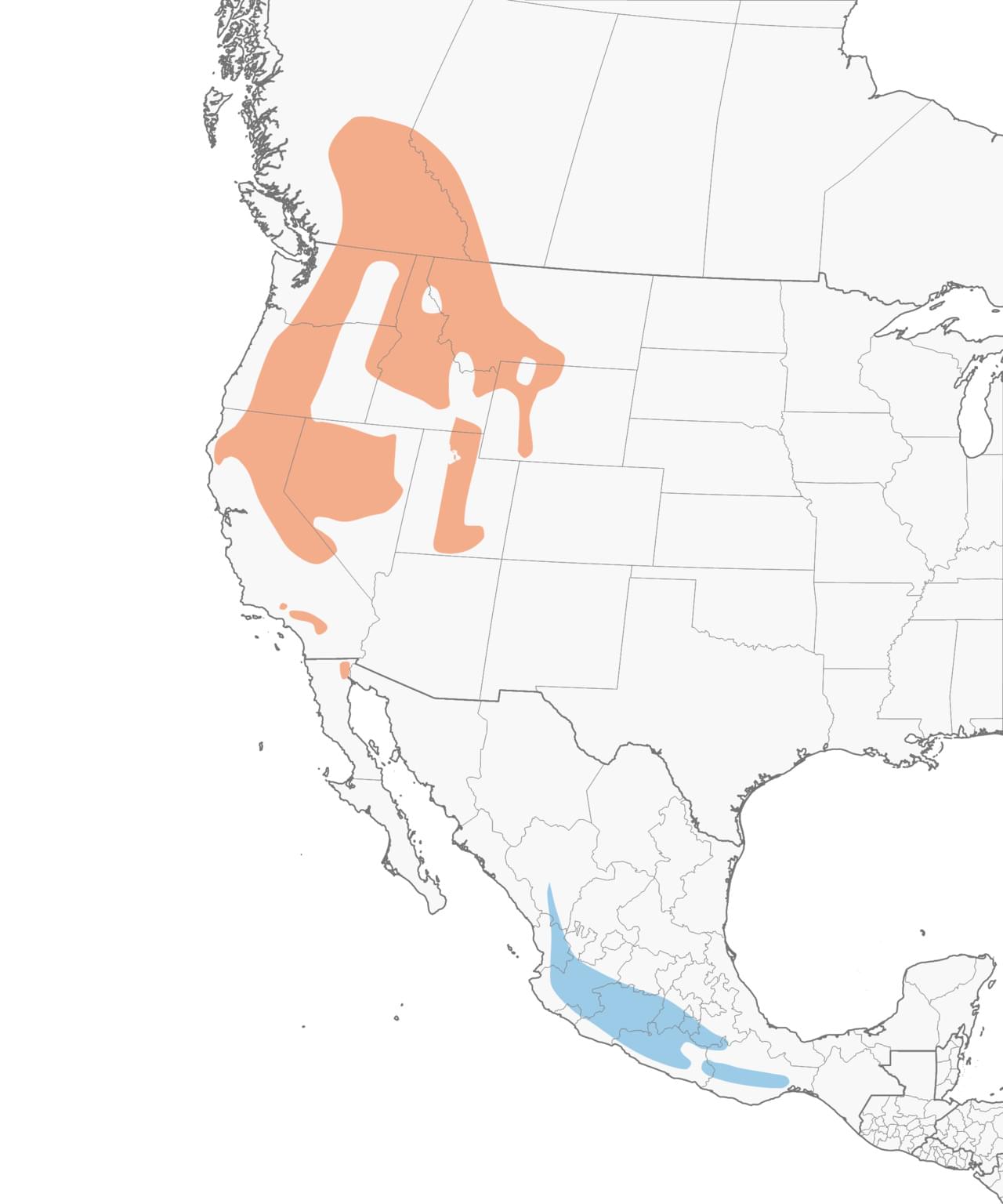
Habitat
This tiny hummingbird breeds in cool mountain environments in mountain meadows, willow and alder thickets near streams, and forests regenerating after a fire or logging. They typically breed at elevations between 4,000 and 11,000 feet, but may breed down to 600 feet along the Columbia River. During spring they migrate north along the coast, stopping in desert washes, coastal scrub near streams, and lower coastal forests to refuel. In the fall they fly south via the Rocky Mountains, stopping in subalpine and mountain meadows. In the winter months, Calliope Hummingbirds use thorn forests, pine-oak forests, and brushy edges in Mexico.
Food
Calliope Hummingbirds take nectar from cup-shaped flowers or isolated tubular flowers not frequently sought by larger hummingbirds. They forage for small flying insects by “hawking”—perching on a branch and flying out to catch an insect in midair. Calliope Hummingbirds also feed regularly at sapwells created by sapsuckers, probably taking both sap and insects stuck in the sap.
Behavior
On the breeding grounds, male Calliope Hummingbirds aggressively defend their territories. Males spend more than half their time perched on exposed branches of willows and alders with a good view of their territory, allowing them to quickly chase off any intruders. Despite their tiny size they chase away Red-tailed Hawks, sapsuckers, Dusky Flycatchers, American Robins, and other species that come near. They spend around 6% of their time performing shuttle and dive displays primarily for females. In their spectacular U-shaped dives, they fly up to 100 feet in the air, dive to near the ground, and then rise up again to repeat the flight. During the dive they make a sputtering buzz with their tail feathers and make a sharp, high-pitched zinging call. Males also perform a shuttle display, in which they hover in front of females with their gorgets flared and wings pulsing to produce a bumblebee-like buzz. Males display for multiple females but do not help care for the young. Though they are strongly territorial on the breeding grounds they are subordinate to larger hummingbird species on the wintering grounds in Mexico.
Nesting
Females build a well-insulated cup-shaped nest with soft, downy plant material. She camouflages the exterior with bits of lichen, moss, or bark fragments, which she binds together with spiderweb. On the outside, nests are 1.5-1.8 inches wide and just over an inch high. The inside of the nest has a diameter of 0.8 inches and is 0.6 inches deep. Females may reuse nests or build upon older nests in subsequent nesting attempts.
Appearance

Typical Sound
© Eric DeFonso 🦑 / Macaulay Library
Adult Description
Tiny hummingbird. Green upperparts. Male has throat streaked red and white. Female has dull whitish throat and whitish or cinnamon-buff chest and belly.
Immature Description
Resembles adult female. In the hand, can be distinguished from adult female by the presence of ridges along the upper mandible.
Plumage Photos
Similar Species
Throat and body color readily separate male Allen's, Rufous, and Broad-tailed Hummingbirds from Calliope Hummingbirds. Females and immatures are much more difficult, but shape and proportions can help: Allen's, Rufous, and Broad-tailed all have longer tails that extend beyond the wings when perched. Allen’s and Rufous have a brighter orange wash on the belly than Calliope Hummingbirds. Female and immature Broad-tailed Hummingbirds are larger than Calliopes and their tails extend beyond the wingtips. Broad-tailed Hummingbirds also have a thicker and longer bill than Calliope Hummingbirds.
- The Calliope Hummingbird is the smallest bird in North America. Its mass is about one-third that of the smallest North American warblers.
